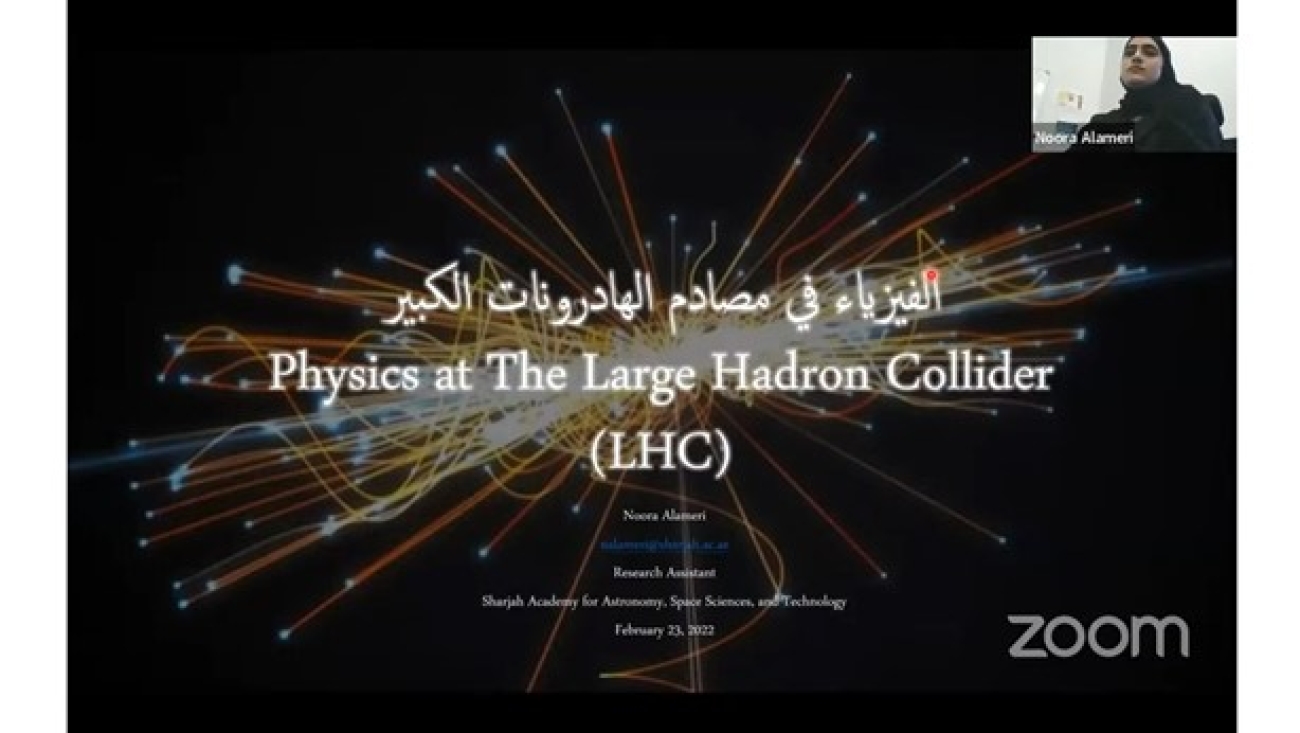particles. Currently, these elementary particles include the fundamental fermions (quarks, leptons, antiquarks, and antileptons), which are generally referred to as matter particles and antimatter particles. This also includes the fundamental bosons (gauge bosons and the Higgs boson), referred to as force particles that mediate interactions among fermions. On the other hand, a composite particle contains two or more elementary particles.
Ms. Noora also talked about CERN, an European research organization that operates the largest particle physics laboratory in the world, and its different instruments. CERN is the site of the Large Hadron Collider (LHC), the world's largest and highest-energy particle collider. Eight experiments (CMS, ATLAS, LHCb, MoEDAL, TOTEM, LHCf, FASER, and ALICE) are located along the collider; each of them studies particle collisions from a different aspect, and with different technologies.
The full lecture can be followed using the following link: https://www.youtube.com/watch?v=G5pTAMncusU



